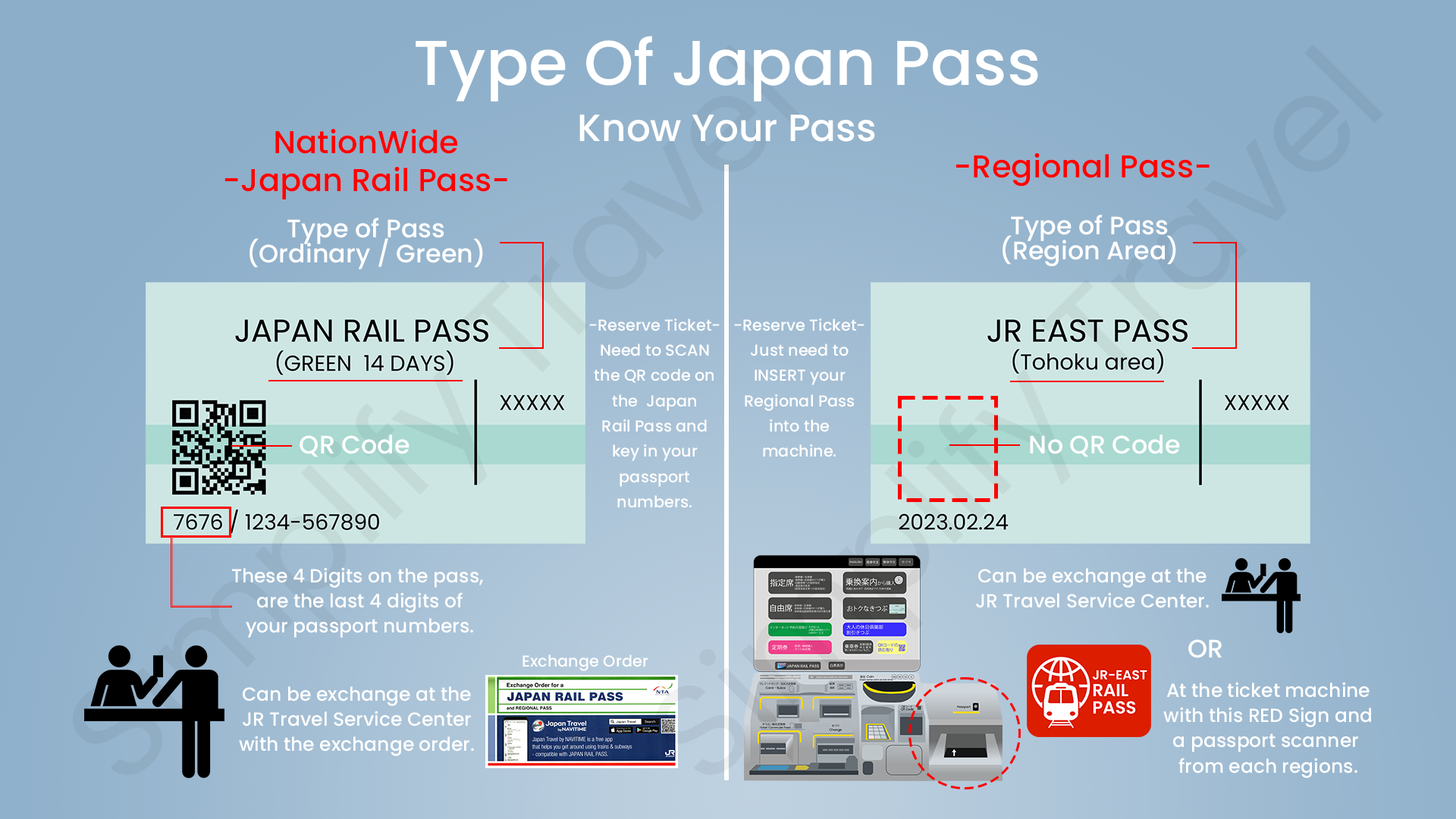Understanding Japan Pass Tickets : Nationwide Japan Rail Pass vs Regional Pass
Simplify Travel : Physical Tickets Comparison
“Travelers, like myself, may sometimes feel confused when watching videos that mention the "JR Pass," only to realise that the ticket shown is actually a regional pass. These passes have different functions and the process for exchanging them can also vary.”
When planning a trip to Japan, one of the key considerations for travelers is selecting the right pass to explore the country's extensive railway network. Two popular options are the Nationwide Japan Rail Pass and the Regional Pass. However, it is essential to understand the differences between these passes and how to exchange them to make the most of your journey. In this article, we will delve into the nuances of these passes, ensuring you are well-informed before embarking on your Japanese adventure.
Nationwide Japan Rail Pass: The Nationwide Japan Rail Pass is a comprehensive pass that provides unlimited travel on the JR (Japan Railways) network across the country. This pass covers a vast network of Shinkansen (bullet trains), local trains, and even some buses. It offers great flexibility, allowing you to explore multiple regions and cities seamlessly. However, it is crucial to note that the Nationwide Japan Rail Pass cannot be exchanged at ticket machines.
The physical ticket is printed with a QR Code on it, making it easier to identify it from the regional pass.
Regional Pass: On the other hand, the Regional Pass is designed to cater to specific regions within Japan, offering more targeted coverage. These passes are ideal for travelers who plan to explore a particular area extensively, such as the Kansai region (Osaka, Kyoto, Nara, etc.) or the Hokkaido region. Unlike the Nationwide Pass, some regional passes can be exchanged directly at ticket machines using a passport scanner, streamlining the process and providing convenience for travelers.
The physical ticket is printed with the region name that the pass covered and it don’t have a QR code printed on it.
Understanding the Differences: While both passes allow for unlimited travel on designated routes, it is essential to know their limitations. The Nationwide Japan Rail Pass covers a vast network, including the iconic Shinkansen lines, while regional passes focus on specific regions or prefectures. It is important to choose the pass that aligns with your travel plans to maximize its value.
Exchanging Your Pass: For the Nationwide Japan Rail Pass, travelers can purchase the pass before arriving in Japan. Once in the country, they can exchange their voucher for the physical pass at designated JR ticket offices. In contrast, certain regional passes offer the convenience of exchanging the pass directly at ticket machines with a passport scanner. This streamlined process saves time and allows travelers to start their journey promptly.
Conclusion: Selecting the right pass for your Japan travel adventure is crucial for a seamless and cost-effective experience. Understanding the differences between the Nationwide Japan Rail Pass and Regional Passes, along with their respective exchange processes, ensures that you make an informed decision based on your itinerary and travel goals. Whether you opt for nationwide coverage or choose to explore a specific region in depth, these passes open up a world of possibilities and offer unmatched convenience for exploring the Land of the Rising Sun.
Affiliate Disclosure:
The links for JR Pass may result in a small affiliate commission if you decide to purchase the recommended product at no additional cost to you.
-
Japan Rail Pass - https://japanrailpass.net/en/
